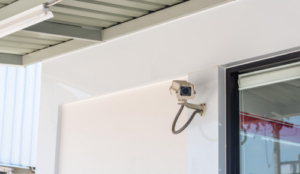Being a landlord can be hard work and time consuming. It comes with a lot of responsibility and you need to ensure that each of your rental properties is well maintained and in proper order. One of the ways to ensure that your properties are in their best possible condition is creating a maintenance schedule.
In this article, we are going to explore what maintenance schedules are, why they are so important and how you create one. Let’s dive in!
What are maintenance schedules?
Rental property maintenance schedules, also known as long-term maintenance plans, are predetermined plans that outline when and how upkeep tasks will be performed on rental properties. They typically include regular inspections, repairs, and maintenance activities to ensure that the property remains in good condition and meets safety and habitability standards.
These schedules help landlords and property managers track tasks like cleaning, landscaping, and electrical and plumbing checks. By following a maintenance schedule, property owners can keep their rental units in tip-top shape and extend the lifespan of their investments while ensuring a safe and comfortable living environment for tenants, minimising any tenant complaints.
Why are rental maintenance schedules so important?
Neglecting routine maintenance adds unnecessary risks to owning rental properties. Without it, you’re likely to encounter extensive repairs and various issues across the property. As well as this, no tenant wants to live in a property that hasn’t been properly cared for. There are a number of reasons why regular rental maintenance is so important.
Property Protection
Regular maintenance safeguards your rentals against wear and tear, damage, and gradual deterioration. This, in turn, prolongs the property’s lifespan and preserves its value.
Tenant Safety
Rental property maintenance is paramount for ensuring a safe and secure environment for tenants and visitors. Regular checks on smoke detectors, prompt repair of faulty wiring, and addressing leaks quickly and efficiently are all essential safety measures.
Tenant Attraction and Retention
Well-maintained rentals are magnets for potential tenants and contribute to tenant retention. Tenants are more likely to renew their lease when they live in a safe and well-cared-for property.
Cost Savings
Routine maintenance serves as an early warning system, allowing you to identify issues before they escalate into costly problems. Therefore, maintenance schedules not only reduce repair expenses but also help prevent expensive emergency repairs.
Legal Compliance
Landlords bear a legal responsibility to maintain their rental properties in a safe and habitable condition. Neglecting regular maintenance can result in legal and financial penalties.
How to create a rental property maintenance schedule
So, we’ve told you why you need a regular maintenance schedule, but we haven’t told you how to create one!
Let’s explore the steps involved in creating a maintenance schedule tailored to the needs of your rental portfolio.
Make a list of every maintenance task that needs completing
The first step in creating a maintenance schedule is figuring out what tasks need to be completed on a regular basis and making a list for each property you own. This will help you to decipher what actually needs doing, how often it needs doing and who needs to complete it. Depending on the types of properties you own, these tasks may differ from property to property.
Determine the frequency
It is essential to plan routine maintenance into your schedule, whether it’s monthly, once a year, or seasonally. Not every task in your maintenance list will need completing at the same time. It usually depends on the type of maintenance task or the property’s age.
For example, if you are renting out business units, maintenance tasks such as picking up rubbish and watering the grounds will be required weekly. If you’re renting residential properties, it is unlikely that you will need to be in charge of such tasks, however you will need to plan yearly checks of fire alarms, and seasonal inspections of pipes, gutters and roofs.
Delegate each task to the designated contractor
Once you have an understanding of what tasks need completing and how often they need to be done, you can assign responsibility to each one. This is an important step to ensure they are all completed on time, but it also establishes clear roles and responsibilities.
Many rental property owners hire a comprehensive facilities management company to organise and execute maintenance tasks. However, professional contractors may be necessary for appliance repairs or replacements.
Tenants hold responsibilities for more minor tasks, like adhering to housing and occupancy codes, maintaining cleanliness, performing seasonal upkeep, and promptly reporting repair needs. Incorporating tenant responsibilities into the lease agreement is vital to educate them on your expectations. Implementing a task tracking system can further streamline the maintenance process.
Create a schedule
Now that you have a comprehensive list of maintenance tasks that need to be completed, the time frames in which they need to be done and the delegated person to perform the job, you are ready to put together a schedule!
Choose a tool that works best for you and your team to ensure everybody’s on the same page, whether that be a dedicated property maintenance tool, or as simple as a reminder in everyone’s online calendar.
Once you have agreed on how to keep on top of the scheduling, you need to add each task to your calendar. As well as the date and time, make sure to include specific details of what needs to be done, including the name and location of the job and any relevant comments.
Review and update
Regularly revisiting and updating the maintenance schedule will ensure that your property is in optimal condition and the need for extensive repairs is reduced. To achieve this, it’s essential to allocate dedicated time for schedule review, whether on a monthly or quarterly basis, depending on the frequency of the task. During these reviews, it’s important to assess the efficiency of each task. For example, is there anything that needs to be added, removed or repeated more frequently?
How Dependable can help
At Dependable, we provide a comprehensive array of property services designed to ensure the long-term well-being of your property. Our expertise lies in crafting efficient, cost-effective, and safe facilities maintenance strategies tailored to your unique needs. We’re committed to establishing a comprehensive maintenance schedule that encompasses both Soft and Hard Facilities Management.
Contact us today to explore our diverse service offerings and initiate a conversation about how we can fulfil your specific requirements, guaranteeing the continued care and maintenance of your property.




